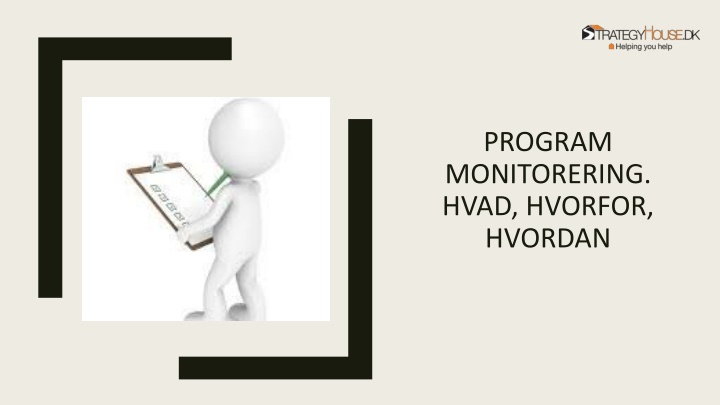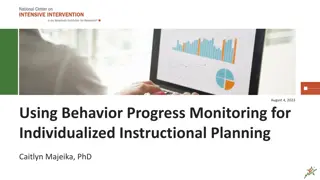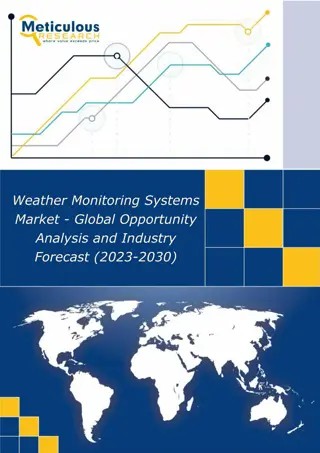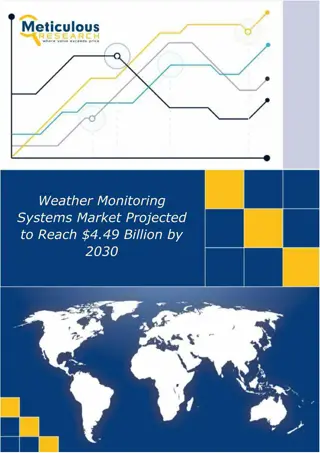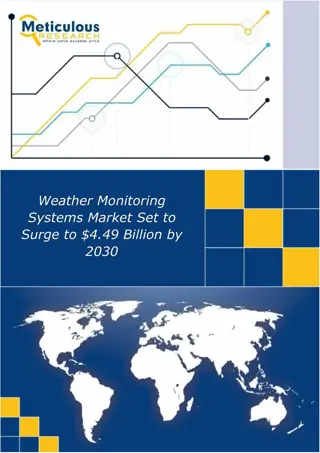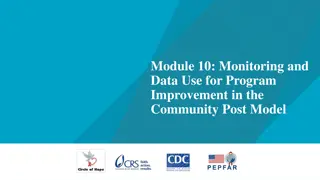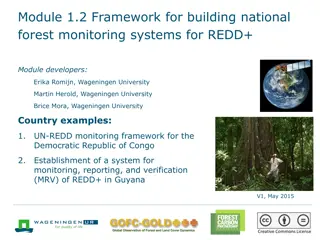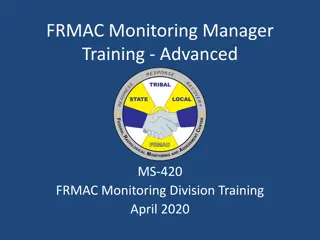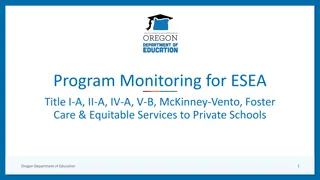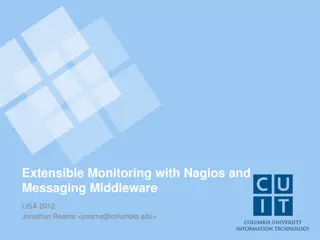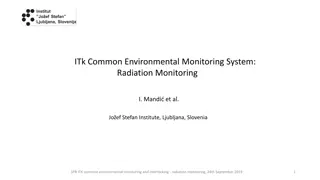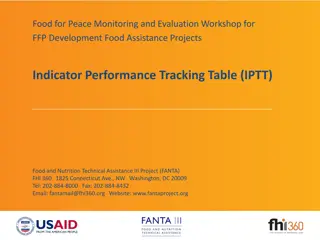Program Monitoring - What, Why, How
Program monitoring involves process, outcome, and impact evaluation to assess qualitative results effectively. Rubrics play a crucial role in capturing multidimensional outcomes, quantifying qualitative changes, and measuring parameters like empowerment and resilience. They help in evaluating the effectiveness of programs in complex contexts and aggregating data for comprehensive analysis.
Download Presentation

Please find below an Image/Link to download the presentation.
The content on the website is provided AS IS for your information and personal use only. It may not be sold, licensed, or shared on other websites without obtaining consent from the author.If you encounter any issues during the download, it is possible that the publisher has removed the file from their server.
You are allowed to download the files provided on this website for personal or commercial use, subject to the condition that they are used lawfully. All files are the property of their respective owners.
The content on the website is provided AS IS for your information and personal use only. It may not be sold, licensed, or shared on other websites without obtaining consent from the author.
E N D
Presentation Transcript
PROGRAM MONITORERING. HVAD, HVORFOR, HVORDAN
Hvor godt er godt eller: hvordan kan rubrics hj lpe til at vurdere kvalitative resultater ? 1) Proces monitorering Proces monitorering 2) 2) Outcome Outcome monitorering monitorering Impact evaluering
Rubrics hvad kan de? Fanger at mange outcomes er multidimensionelle . opvejer svagheder ved enkeltindikatorer Kan bruges til at kvantificere kvalitative ndringer hos en st rre gruppe mennesker. Empowerment, resilience, institutional capacity etc. Hj lper til at overveje hvor godt godt er i fht. kvalitative parametre som empowerment eller resilience . Relevant b de i stabile og komplekse sammenh nge Kan bidrage til at aggregere data. Flere (kvalitative og kvantitative indikatorer), samlet i et m l . Skal suppleres med metoder der kan verificare vores bed mmelse.
5) Rubrics et eksempel Inactive Becoming Active Active Becoming Proactive Proactive Kriterie Kriterie Women don t think their situation can change. Women participate in DACAAR activities. Still unsure about the project and its benefits. Women feel confident they can also learn and do things. Women understand that what they do affects their situation and how they feel. (Feel sure they can make a difference.) Women feel they can manage without DAACARs support. Motivation and Motivation and perceptions perceptions Hesitate to participate in the program. Consistently follow activities and instructions with support of DACAAR. Encourage other women to join. Begin asking questions about the program and women s rights. Talk to other women about their rights and violations of these rights. Don t think DACAAR can help. Understand that women have rights and ask questions about violation of own rights. Talk to other women about rights.
Rubrics.. Hvordan informarer de dataindsamling? Inactive Becoming Active Active Becoming Proactive Proactive Kriterie Kriterie Women don t think their situation can change. Women participate in DACAAR activities. Still unsure about the project and its benefits. Women feel confident they can also learn and do things. Women understand that what they do affect their situation and how they feel. (Feel sure they can make a difference.) Women feel they can manage without DAACARs support. Motivation and Motivation and perceptions perceptions Hesitate to participate in the program. Consistently follow activities and instructions with support of DACAAR. Encourage other women to join. Begin asking questions about the program and women s rights. Talk to other women about their rights and violations of these rights. Don t think DACAAR can help. Understand that women have rights and ask questions about violation of own rights. Talk to other women about rights.
Rubrics.. Hvordan kan de bruges til rapportering ? Inactive Becoming Active Active Becoming Proactive Proactive Kriterie Kriterie Women don t think their situation can change. Women participate in DACAAR activities. Still unsure about the project and its benefits. Women feel confident they can also learn and do things. Women understand that what they do affect their situation and how they feel. (Feel sure they can make a difference.) Women feel they can manage without DAACARs support. Motivation and Motivation and perceptions perceptions Hesitate to participate in the program. Consistently follow activities and instructions with support of DACAAR. Encourage other women to join. Begin asking questions about the program and women s rights. Don t think DACAAR can help. Understand that women have rights and ask questions about violation of own rights. Talk to other women about their rights and violations of these rights. Talk to other women about rights. 100% 50% 40% 10%
Hvordan? Hvordan laver man dem? Sprg medarbejderne i felten
At lave en Rubric i tre skridt. Social kapital 1. Hvad rummer det, I gerne vil m le? (definer kriterierne) Finansiel/ natur kapital Viden/ planer Resiliens 2. Bliv enig om skalaen/m leparameter 3. Formuler indholdet Produktions- kapital
Rubric Resiliens (husholdning) Meget svag Svag Acceptabel St rk Meget st rk Kriterie Kriterie Social kapital Viden/ intellektuel kapital
